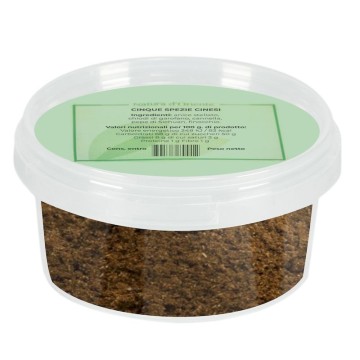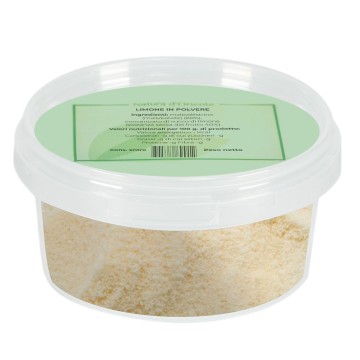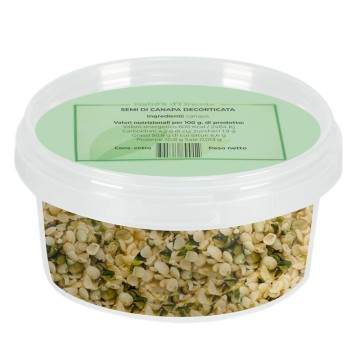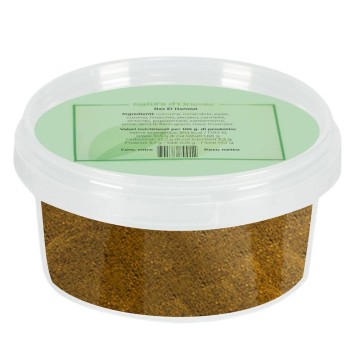The combination of these ground spices brings a broad complex of flavors to Chinese cuisine and beyond, as it is used all over the world. It is the best-known Chinese spice mix and mixes the elements according to the philosophy of balance between flavors - inspired by the harmony between yin and yang. It is based on the idea of combining and harmonizing all the five typical flavors of Chinese cuisine: sweet, sour, salty, spicy and bitter. A philosophy that belies the fact that the name of the blend derives from the number of spices that compose it. In the so-called Five Spice Blend, the five aromas are star anise, cloves, cinnamon, Sichuan pepper, fennel. The use of Szechuan (Sichuan) pepper is the "trademark" of the typical Chinese Five Spice recipe. It appears as a dry brown powder, due to the grinding of individual spices, and is commonly used to flavor meat and fish, as well as used for marinades and side dish dressings.
What spices are in the "Chinese five spices" blend?
The recipe shows a distinct liquorice-like flavor due to star anise, with sweet and warm notes due to cinnamon and fennel. Cloves add a refreshing nuance, while Szechuan peppercorns add a peppery note.
Cinnamon is sweet but with a spicy undertone. It infuses the blend with a warm flavor and intense aroma that balances the bitter notes of other spices. Szechuan peppercorns are not similar to pepper, but are derived from a reddish-brown berry with a very unique flavor (Zanthoxylum piperitum). The first sensation of this aromatic spice is spicy, a pepperiness that numbs the tongue and gives way to notes of anise and ginger, gradually sour and salty. Ground cloves have a pungent and sweet, balsamic flavor with floral hints. Unmistakable, to elevate the blend towards deep sweetness, together with cinnamon. Star anise has a flavor similar to licorice, with a more bitter undertone that evokes mint. It is very fragrant and strong, which is why a very small amount is enough to flavour. Fennel is similar to anise, but sweeter and less pungent, without the liquorice flavor. The strong flavor, with bitter hints, balance the spices with powerful aromas.
How to use the Chinese Five Spice blend in cooking
It is commonly used in Chinese cuisine to flavor braised or roasted meat, fish and poultry. Five Spices are often a seasoning for fatty meats such as pork, duck, goose and white meat in general. In particular, this mixture is used in the "red cooking" technique - the long process of braising meat, stewed in a reddish soy sauce and doubanjiang sauce (fermented broad bean sauce). The combination of spices that gives recipes a final bright brown hue. The Five Spices are used in stews or added to breading for foods that must then be fried. When used sparingly, not in a dominant form, the mixture flavors chicken and seafood with an exotic touch. You can include the Five Spices in the creation of marinades (a teaspoon with a little oil and vinegar) and as a BBQ ingredient, in the dry rub for meat to be cooked on the grill or on the barbecue. You can also use the mixture in Tex-Mex burritos, to flavor cheese or scrambled eggs. In first courses it enriches rice recipes, and there are many preparations in which the five spices enter the vegetables and side dishes. The typical blend is fat-free, also suitable for vegan and vegetarian cuisine. The fragrant Five Spice mix is delicious for sautéing and can be added to sauces – particularly using tofu. It is a mixture that should be experimented not only for Chinese cuisine, it makes a pleasant complexity of taste in the preparation of some baked goods such as biscuits and cakes. It can be used in muffins or crepes for an exotic, delicate and personalized touch. Grilled Five Spice Chicken Ingredients: 1 whole chicken cut in half - ½ squeezed lime - 3 crushed garlic cloves - 1 tablespoon rice vinegar - 1 tablespoon ground Chinese Five Spice - 2 teaspoons hot chilli paste - 2 teaspoons of grated fresh ginger - 1 teaspoon of soy sauce. For the sauce: ? cup seasoned rice vinegar - ½ squeezed lime - 1 teaspoon hot chili paste Preparation Score the skin of each piece of chicken 2 to 3 times, about 3-4mm deep. In a bowl, whisk together the juice of ½ lime, the garlic, 1 tablespoon rice vinegar, 1 tablespoon fivespiceand Chinese, 2 teaspoons of chili paste, ginger and soy sauce. Pour into a resealable plastic marinade bag that can hold all the ingredients.
Add the two halves of the chicken, cover evenly with the marinade, squeeze out excess air and close the bag. Marinate in the refrigerator for 6 hours. Preheat an outdoor grill to medium-high heat and lightly oil.
Remove the chicken from the bag and transfer to a plate or baking sheet lined with paper towels. Dry the chicken pieces with more paper towels. Store the marinade mixture in a small bowl. In a small bowl, create some sauce: whisk together 1/3 cup rice vinegar, juice of 1/2 lime, 1 teaspoon chili paste. Set aside.
Grill the chicken on the preheated grill, skin side down, for 2 minutes. Turn each piece, brush with leftover marinade mixture, and move chicken to indirect heat. Grill, brush again, and turn every 10-15 minutes, until the meat is golden brown and no longer pink in the center, for a total of about 45 minutes. If you use an instant-read thermometer, the thickest part of the thigh, near the bone, should read 180 degrees F.
After grilling, pour the vinegar and lime juice mixture over the chicken and serve.
Origins and History of the mixture
This spicy mix comes from an original Pekingese recipe, which spread throughout Asia along with the movement of the Chinese population. Chinese Five Spice powder may have originally been used medicinally to balance yin and yang, and we know that five is considered a number associated with healing properties. Even in gastronomy, the theory predicts that the five spices contain a balance of the main flavours, with interesting plays between cold (yin) and heat (yang). Over time, from Beijing cuisine, the mixture has been integrated into Chinese and Taiwanese cuisine, also used in Vietnamese recipes and other parts of Asia. In some local versions it may include other ingredients including anise seeds, ginger root, nutmeg, turmeric, cardamom, amomum villosum pods (similar to cardamom), licorice, orange peel. In southern China, for example, Five Spice powder includes Saigon cinnamon and orange peel to replace Chinese cinnamon and cloves, so it tastes slightly different than blends from other regions of China. It is used extensively in Sichuanese-style braised beef stew, which is very popular in Chinese cuisine in Beijing, Hunan and Sichuan.











 No reward points for this product.
No reward points for this product.















